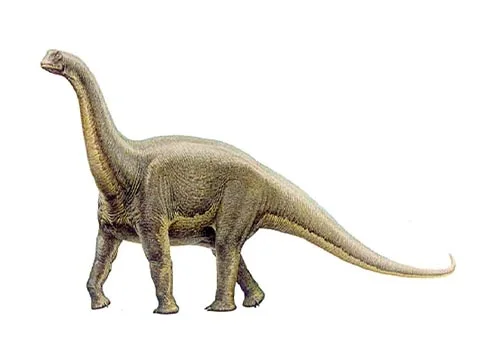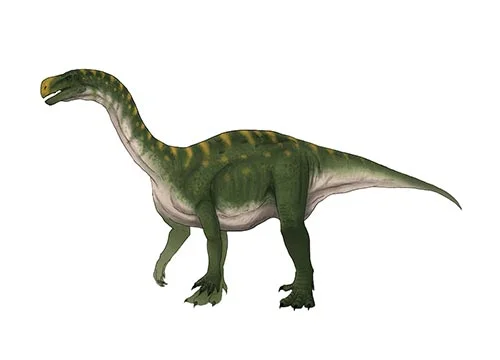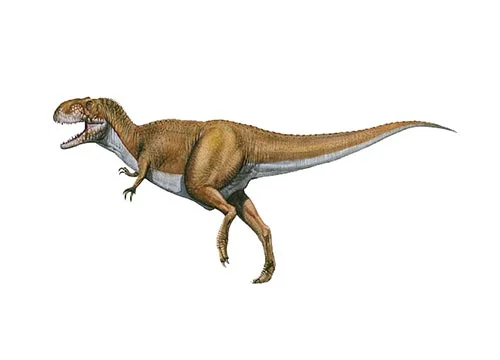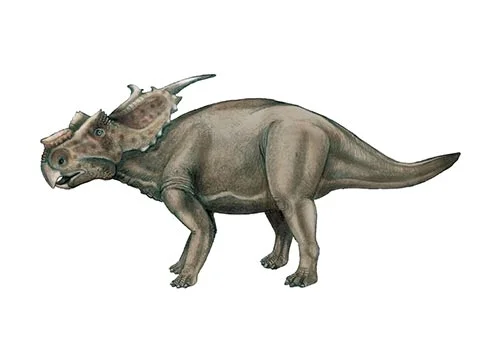Alamosaurus (Alamo lizard)

Alamosaurus, also known as “Alamo lizard,” was named by paleontologist Charles W. Gilmore in 1922. This herbivorous dinosaur lived during the Early Jurassic period, approximately 199-189 million years ago. Alamosaurus was a Sauropod, estimated to measure between 20-24 meters in length. Alamosaurus fossil remains were found in USA, New Mexico - Ojo Alamo Formation (possibly part of the Kirtland Formation, Utah - North Horn Formation and Texas - Black Peaks Formation, El Picacho Formation and Javelina Formation., shedding light on the ancient ecosystems of this region and it is offering valuable insights into the prehistoric world and the evolution of Sauropods.
USA, New Mexico - Ojo Alamo Formation (possibly part of the Kirtland Formation, Utah - North Horn Formation and Texas - Black Peaks Formation, El Picacho Formation and Javelina Formation.
Early Jurassic, 199-189 million years ago
Alamosaurus Facts
In the ever-evolving story of Earth’s prehistoric giants, some dinosaurs shine as true marvels of the ancient world. Among them is Alamosaurus, the “Alamo lizard,” a herbivorous behemoth named by the renowned paleontologist Charles W. Gilmore in 1922. This colossal sauropod dinosaur lived during the Early Jurassic period, approximately 199-189 million years ago. Alamosaurus, with its estimated length of 20-24 meters, provides a compelling window into the prehistoric world and the fascinating evolution of sauropod dinosaurs.
Alamosaurus was a gentle giant that graced the Earth during the Early Jurassic period, a time when massive herbivores dominated the landscapes. Its name, derived from the “Alamo lizard,” reflects the majestic presence this dinosaur must have had in its prime.
Estimated to measure between 20-24 meters in length, Alamosaurus was one of the larger members of the sauropod family. It possessed the classic features of sauropods, including an incredibly long neck, a massive body, and a long tail. These adaptations allowed it to efficiently browse on vegetation, making it one of the Earth’s most successful herbivores.
Fossil remains of Alamosaurus have been discovered in various parts of the United States. These findings include sites in New Mexico, specifically within the Ojo Alamo Formation, as well as in Utah, within the North Horn Formation, and Texas, within the Black Peaks Formation, El Picacho Formation, and Javelina Formation. These discoveries offer invaluable insights into the diversity of ecosystems and environments that Alamosaurus inhabited.
As a herbivore, Alamosaurus played a crucial role in shaping the vegetation and ecosystems of its time. Its size and adaptations made it a formidable grazer, contributing to the complex web of life during the Early Jurassic.
Alamosaurus is a key figure in the study of sauropod evolution during the Early Jurassic. Its unique characteristics and ecological role provide vital information for understanding how these majestic giants adapted and diversified over millions of years.
Alamosaurus, the “Alamo lizard,” though perhaps less renowned than some of its sauropod relatives, holds a special place in the annals of paleontology. Its fossil discoveries across the United States have enriched our understanding of prehistoric life during the Early Jurassic and the evolution of sauropod dinosaurs. This gentle giant serves as a reminder of the incredible diversity of life that once thrived on our planet and continues to inspire awe and wonder in the hearts of scientists and dinosaur enthusiasts alike.
As paleontologists continue to unearth more about Alamosaurus and its prehistoric world, we gain a deeper appreciation for the intricate tapestry of Earth’s history, where majestic creatures like Alamosaurus once roamed and shaped the landscapes of a bygone era.



